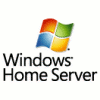- Qualcomm Launches Snapdragon 4 Gen 2 Mobile Platform
- AMD Launches Ryzen PRO 7000 Series Mobile & Desktop Platform
- Intel Launches Sleek Single-Slot Arc Pro A60 Workstation Graphics Card
- NVIDIA Announces Latest Ada Lovelace Additions: GeForce RTX 4060 Ti & RTX 4060
- Maxon Redshift With AMD Radeon GPU Rendering Support Now Available
Windows Home Server Preview

We have a look at the beta version of the Home Server software, which you’ll be able to purchase separately or as part of a Home Server bundle from PC makers like HP. With its combination of features and simplicity, this is one future home networking product that’s worth looking forward to.
Page 1 – Introduction
|
|
Windows Home Server is a product from Microsoft, introduced at CES this past January, scheduled to be released around the holiday season of 2007. WHS is designed to be a “headless†network appliance, meaning there will be no monitor, mouse, and keyboard attached to the system.
Microsoft has two distribution models for the product.
- 1. A tightly integrated hardware/software solution from system manufacturers such as Dell and HP.
- 2. Software available for system builders and technology enthusiasts.
For most of the public sector, the first model is likely to be the method for obtaining a Windows Home Server. These complete hardware/software solutions will come pre-built from manufacturers, usually in small, aesthetically pleasing cases. WHS will be preinstalled and configured on these machines by the manufacturer; all the consumer has to do is install the client on their home computers. The second model is for PC enthusiasts that prefer to “roll their own,†so to speak.
Essentially, Windows Home Server is designed to be a central repository for all of your household’s important data and media files. Currently Windows Home Server is in the closed beta stages, and for the purposes of this preview I will be working from WHS Beta 2. That being said, the features I talk about in this article are still subject to change in the final RTM version.
- 1. Home Computer Backup and Restore
- 2. Centralized Storage
- 3. Home Network Health Monitoring
- 4. Remote Access
- 5. Media Streaming
Without further ado, let’s take an in-depth look at what the future may hold for the home networking enthusiasts out there.

Windows Home Server has fairly modest minimum hardware requirements.
- Minimum Hardware Requirements
- Processor – 1GHz Pentium III or higher
- RAM – 512MB RAM
- Hard Drive – 80GB Internal Hard Drive
- CD/DVD – Any Bootable DVD-ROM Drive
- Network – 10/100 Network Interface Card
I decided to test the Windows Home Server using close to the minimum system requirements. As I said before, Microsoft plans to release this in a standalone software form that can be purchased by enthusiasts — if you have some low-end or old hardware lying around, it might be a good candidate for WHS. I have a fairly modest Dell Dimension B110 (I had been using for a Windows 2003 Server) that I thought would be a good candidate for this project.
- Test Bed: Dell Dimension B110
- Processor – 2.5GHz Celeron D
- RAM – 512MB DDR PC3200
- Hard Drive – 80GB PATA UDMA/100
- CD/DVD – Internal DVD-ROM
- Network – On-board Intel Pro/100 VE
If you system supports booting from a USB device, you can install Windows Home Server using a USB DVD drive. After the installation there isn’t much need for the DVD drive in the system anymore.
If you don’t have a system available but want to use WHS, the hardware requirements aren’t strenuous, and a basic desktop machine can fit the bill. I configured a Dell Dimension E520, with a 2.8GHz Celeron, 160GB HD and 512MB of RAM at dell for around $480. If you’d rather build your own server, I was able to configure a system with an AMD Sempron 3400+ (1.8GHz; Socket AM2) with a 250GB SATAII HD and 512MB RAM for $310 after shipping. As you can see, a home server can be done fairly well on the cheap if you don’t already have an older system around. Because WHS is still in the Beta stage, I was unable to get prices for custom built systems from OEMs like Dell and HP.
|
|
Support our efforts! With ad revenue at an all-time low for written websites, we're relying more than ever on reader support to help us continue putting so much effort into this type of content. You can support us by becoming a Patron, or by using our Amazon shopping affiliate links listed through our articles. Thanks for your support!




